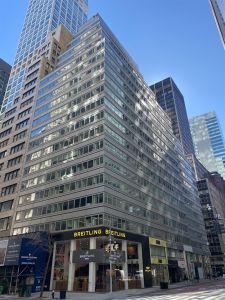Reading the newspapers this past weekend made it abundantly clear that federal, state and local governments are increasingly looking for ways to raise new revenues to meet unfunded spending requirements and initiatives. Chicago is looking to pass gambling legislation to come up with a revenue stream for a $30 billion unfunded pension system liability. New Jersey is considering legalizing gambling in northern counties across the river to raise much-needed revenue and Connecticut is deciding whether to raise sales taxes and convert what was supposed to be a one-time corporate tax surcharge into a permanent tax obligation.
Here in New York, the clock is ticking on determining the fate of, among other things, the 421-a tax abatement program. Much has been written about this program, which is essentially an incentive to get private sector developers to create the desperately needed affordable housing that the local and state government does not have the money to create.
With all of the revenue that the government collects in the form of taxes, it is remarkable that there is not enough money to get things done that need to be done. Remarkable yes, but not surprising; governments have historically proven to be inefficient spenders of our tax dollars. This begs the question: What are our tax dollars being spent on? When politicians on both sides of the aisle talk about ways in which money can be spent more effectively, they frequently point to the elimination of “waste fraud and abuse” which no one can argue with. This position is essentially a cop out so that these elected officials, and hopeful candidates, do not have to take positions about what specific items they would actually cut or reduce spending on. Periodically in this column I have looked at wasteful government spending and haven’t done so for a couple of years. So I thought this week we would take a look at some of the recent things that our government has used our tax dollars for, all in the name of “investment,” that could have been deployed in so many better ways. Here is a list of some of my favorites:
The National Institute of Health’s Center for Alternative and Complementary Medicine spent $387,000 studying the impact of Swedish massage on rabbits.
The National Science Foundation spent $856,000 to teach mountain lions to walk on treadmills so that researchers could better understand the instincts of mountain lions.
$171,000 was spent to study how monkeys gamble. (No, I didn’t make that one up!)
The National Institute of Health spent $371,000 on a study to determine whether mothers love dogs as much as they love their kids.
$18 million was spent to renovate Friedman Memorial Airport, a low traffic airport in Sun Valley, Idaho, catering to a relatively small group of skiers.
The government spent $331,000 to conduct a study to determine whether hungry spouses were more, or less, likely to stab voodoo dolls resembling their partners.
$175,000 was spent to determine if cocaine would make Japanese quail engage in sexually risky behavior.
A tattoo removal program was initiated in California at a cost of $200,000.
A $3 million grant was given to the University of California for a videogame research project.
$30 million was spent to help Pakistani farmers produce more mangoes.
The Department of Agriculture spent $700,000 to study methane gas emissions from dairy cows.
$914,000 was spent to study how Americans use the Internet to find love.
$432 million has been spent on C-27J warplanes, which will never be used because they were replaced with an updated version of the plane years ago.
$335 million was spent on a study that came to the conclusion it would be good for wives to calm down faster after arguments with their husbands.
Hundreds of millions of dollars was spent to upgrade flights from coach to first class for federal employees.
The Department of the Interior spent $10,000 to study the growth rate of saltmarsh grass—literally paying people to watch grass grow.
And importantly for the real estate industry, the federal government paid $25 billion last year maintaining vacant and unused federal buildings. Perhaps they need a good commercial real estate broker?
The next time you hear a politician talking about raising taxes, or coming up with new ways to raise revenues, a suggestion to look at the ways in which existing revenue was spent might be warranted. And if they talk about eliminating waste, fraud and abuse, ask them to actually do something about it.
Robert Knakal is the chairman of New York Investment Sales for Cushman & Wakefield and has brokered the sale of approximately 1,700 properties in his career having a market value in excess of $12.5 billion.


